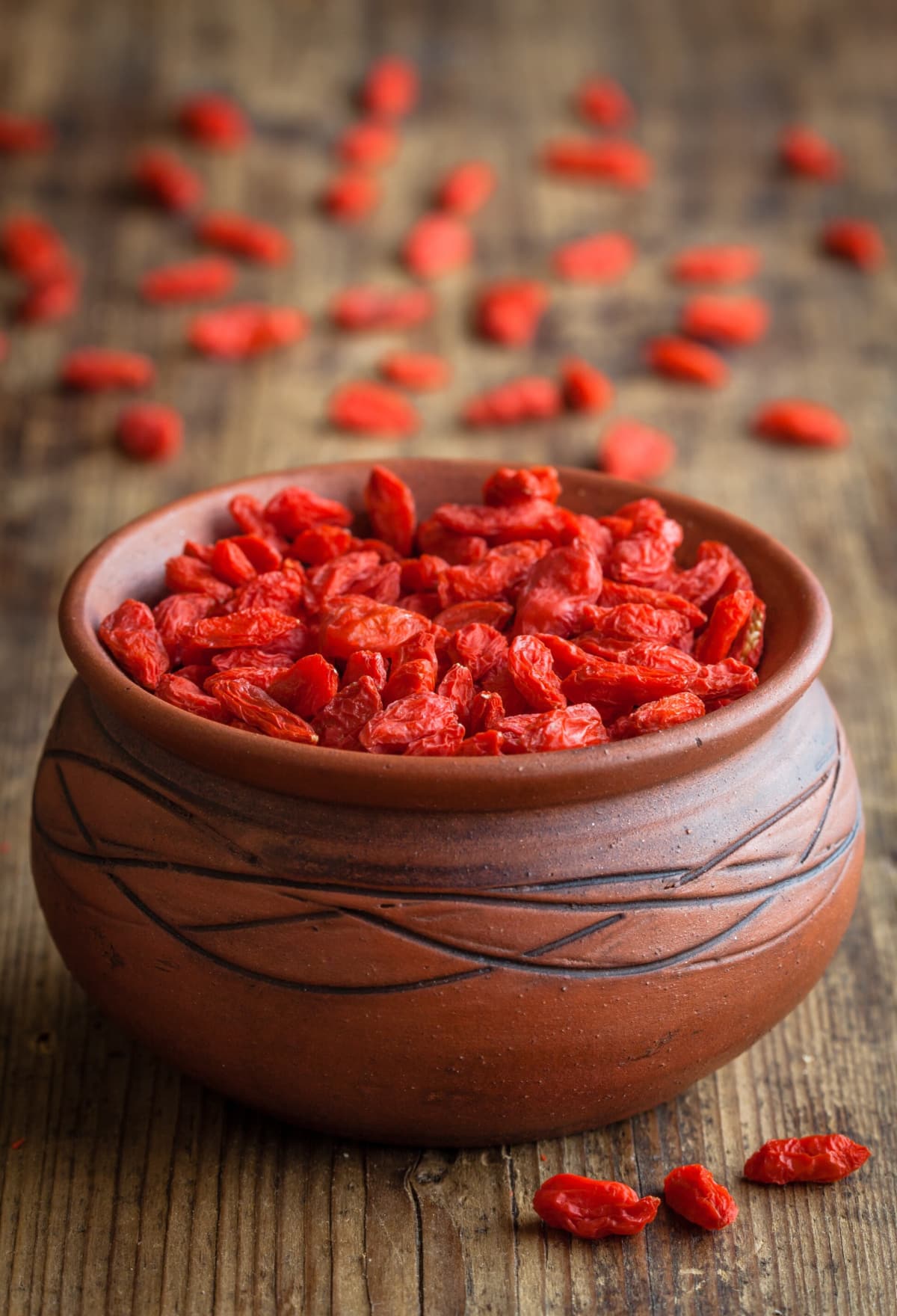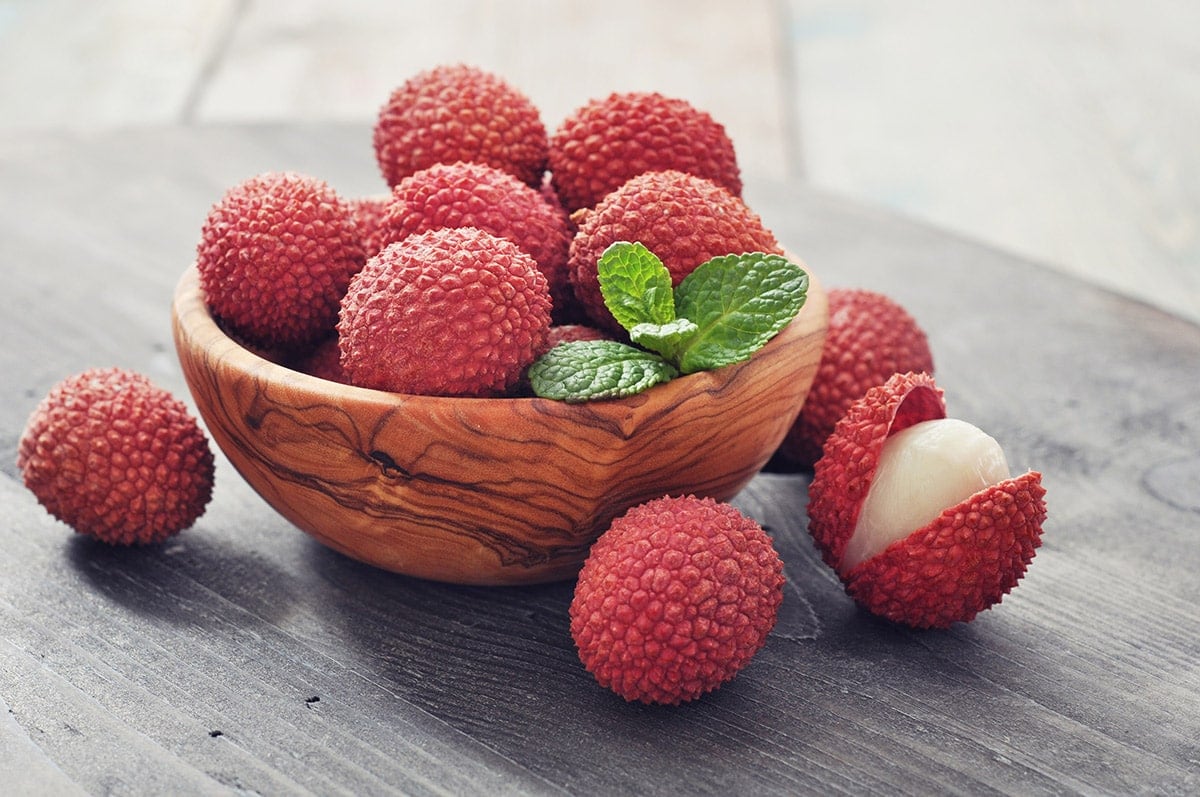Exotic Asian Fruits to Try
Exotic Asian fruits to try:
Trying out new exotic fruits isn’t just good for your health, but it’s also fun to try new things. Here are a few of my favorite exotic asian fruits to try!
Several of these fruits cultivated in South Asia, the Caribbean, and China are high in antioxidants, vitamin C, B vitamins, fiber, and other nutrients that aid in the development of a healthy immune system.
These are some amazing exotic fruits to try, with bright colors, distinctive shapes, and a fascinating variety of flavors.
Asian Pear
Asian pears have a round top-dimpled structure, similar to an apple. Their skin can be silky or spotty, and their hue can range from yellow to dark brown. They have a pear-like flavor instead of an apple flavoring. They have a rather acidic, sweet, flowery flavor than just an apple. Eat the asian pear raw and whole like you would a conventional pear or apple, leaving the seeds and core behind. You can also slice it up like apple as a freshening after-dinner treat.
Buy A Case of Freeze Dried Asian Pear
Dragon Fruit
With strong green scales, there seem to be magnificent bright red, yellow or purple-skinned types. The fruit is pear-shaped, oval, or elliptical. The white or crimson fruit flesh is flecked with delicious black seeds. The flesh has a mildly sweet flavor with a touch of acidity to it. The meat can be eaten whole or sliced into little pieces and served to salads, smoothies, or fruit bowls.
Buy Fresh Dragon Fruit at Whole Foods
Buy Frozen Dragon Fruit at Whole Foods
Durian
The fruit has the appearance of a long sea urchin. The interior flesh is sweet and creamy, with little fluid. It has a gummy texture. Several people despise the flavor, whereas others enjoy it. It’s possible to consume it fresh or fried. It goes well with rice dishes as well as desserts like ice cream, smoothies, and cheesecakes.
Goji Berries
Goji berries are small red fruits. They are tasty and flavorful. Powdered or dried versions of these berries are commonly available. They’re also found in a variety of superfruit powders and beverage blends.
Buy Dried Goji Berries at Whole Foods
Health Benefits of Goji Berries
Guava
Guava is a tropical fruit with a circular to pear-shaped form and a diameter of roughly 3 inches. Many microscopic hard seeds can be found in the pulp. The meat is pink and the skin is yellow. The fruit can even have a musty, unpleasant odor, as well as a sweet pulp that several people dislike. Because guavas have a high pectin content, they help to harden the ingredients when added to sweets. They’re delicious when preserved and used as a spread over pastries and bread.
Buy Guava Nectar at Whole Foods
Jackfruit
A jackfruit is comparable in size to a huge watermelon. It is just the world’s largest tree fruit, measuring up to 100 pounds. It has a powerful musky odor and a taste similar to Juicy Fruit gum when it is ripe. Fresh ripe jackfruit is delicious, and it can also be used in ice cream and pastries. When jackfruit is still green, it can be ripped apart and used as a replacement for chicken, pork, or in other veggie main dishes.
Buy Fresh Jackfruit at Whole Foods
Buy Frozen Jackfruit at Whole Foods
Get Dried Jackfruit at Whole Foods
How To Tell If Jackfruit Is Ripe?
Kumquat
Kumquats are little, diminutive fruits that resemble oranges. The peel is a vivid orange color and is delicious. They have a tart flavor that is slightly sweet but extremely strong. They make great preserves and provide beverages and desserts with a wonderful sour flavor.
Langsat
The elliptical Langsat fruit has a thick greyish-yellow covering. They look like potatoes, but they peel apart like a mandarin orange. The fruit has an acidic, sour, and sweet flavor that is slightly and juicy creamy. The flesh has a sticky texture to it.
Loquat
Loquat fruits are one to two inches long and grow in circular clusters. They have clear skin that is orange or yellow but can also be crimson or deep pink. When completely mature, loquats are slightly acidic with citrus overtones. Loquats are wonderful when cooked into cakes, pies, or cobblers. Salad dressings and smoothies are also delicious with them.
Longan
The flesh of the longan is translucent, and the seeds are huge black round seeds with white patches. The flesh smells musky and has a sweet taste like lychee fruit. Fresh, canned, or dried longan are all options. Jellies, desserts, salads, and smoothies can all benefit from it.
Lotus Fruit
Lotus blooms are pink or white and grow in shallow water. The seeds, which resemble peas, can also be eaten. The tubers and stems of the Lotus plant have a mild, mildly sweet flavor. The seeds have a delightful flavor.
Lychee
Lychee’s skin is pink or red. Small pointy protuberances cover the flesh, which is rough-textured. They resemble sweet gum tree seed pods, but with longer soft spikes. Lychee has a pleasant flavor that is similar to a cross between a strawberry and a watermelon, and is very similar to the aforementioned longan fruit. It is delicious in juices, frozen desserts, or on its own.
Mango
Mangos are fruits that are oval, circular, or kidney-shaped. They can be different in size, from plum-like to five-pound fruit. Colors range from red and yellow to drab green. The flesh is pale orange and has a pit in the middle. Mangos are highly juicy and have a peach-like feel. They have a buttery flavor and are quite sweet.
Mangosteen
Mangosteen fruit is spherical with a flattened end and the size of a little orange. The rind is a vivid purple-reddish color. The fruit has a tangy and sweet flavor, although it’s a little fibrous.
Buy Mangosteen Powder on Amazon
Noni
Noni might be green, yellowish, white, or maybe even a milky translucent tint. Their skin resembles that of an amphibian and is covered in rough, wart-like growths. The flavor of fresh noni is acidic and sour with a. “ripened cheese” undertone. It has a fish sauce-like flavor when fully mature. For this reason, it is more commonly consumed for health benefits, rather than for pleasure. Read about Noni’s Amazing Health Benefits.
Passion Fruit
The passion fruit is three inches in diameter and spherical. It has a thick, heavy rind. Sacs loaded with orange-colored liquid and little crunchy seeds can be found in the flesh. The flavor of passion fruit is fruity and acidic at the same time. The fruit is edible uncooked. Sauces, salad dressings, tarts, and sweets can all be made using it.
Buy Frozen Passion Fruit at Whole Foods
Buy Fresh Passion Fruit at Whole Foods
Persimmon
Persimmon trees have been cultivated for their delicious fruit and gorgeous wood for centuries. Persimmons, with orange-colored fruits, are famous for their sweet, honey-like flavor. While there are hundreds of variations, the Fuyu (pictured) and Hachiya are two of the most famous.
Pomelo
Pomelo is a huge citrus fruit that looks and tastes like grapefruit. The rind is greenish to yellowish. The flesh is either creamy white or pink. The pith of this citrus fruit is deeper than that of most others. Pomelo has a similar flavor to grapefruit, but with much less bitterness.
Pulasan
Although pulasan and rambutan have a similar appearance, they are not the same fruit. The skin of a pulasan is thick and leathery, featuring short, blunt spikes on the outside. The exterior skin is a combination of purple and green. A white-yellow orb appears inside the flesh when peeled. The flesh is rich and creamy, with the same sour and sweet mix as a rambutan, but it is sweeter.
Rambutan
Rambutan is ripe when it turns orange, yellow, or red. It’s skin has black spines that look like hair. In it is a white ball of luscious flesh with a seed in the middle. The flesh has a sweet flavor when peeled. Salads, ice cream, and juice can all benefit from the sweetness of the flesh.
Rambutan Nutrition and Benefits
Rose Apple
Rose apples would be most closely related to guavas, and while there are several species, the most widely consumed form is Syzygium Jambos. The plant is native to South Asia, and it has become popular as an ornamental plant all over the world.
More about Rose Apple (or Otaheite Apple).
Santol
The fruit, Santol, is commonly consumed in the Philippines. It looks similar to mangosteen, but has a more sour flavor. It is really difficult to harvest these fruits. The people of the Philippines need to climb on a tall tree of Santol fruit and use sharp edge wooden sticks to cut them down from the branches. The main thing is to grab them to avoid free fall and waste of fruit.
Sapodilla
When mature, the sapodilla is structured like a chicken egg and has a rough, brown exterior. The inside of the fruit is a gritty golden fruit. The fruit is delicate, sweet, and juicy when fully mature, similar to a pear. After removing the peel and seeds, the fruit can be eaten raw. Salads, pies, sauces, syrups, and other baked items all benefit from it.
Buy Sapodilla Powder from Amazon
More About Sapodilla (Naseberry)
Snake Fruit
Snake fruit is about the same size as a fig. The tough skin is dark brown and has the look of snake scales when grown. It has the spiky texture of a cactus. The flesh on the inside is creamy white and is separated into three lobes. The seeds are not harmful. The flesh of the fleshy fruit is sweeter than honey with a hint of sourness, similar to that of a pineapple.
Soursop
The fruit of the soursop, also known as guanabana, is round and has spiky green skin. It’s eight inches long on typical and can weigh up to ten pounds. The flavor of soursop is similar to that of an apple and strawberries, with a tinge of citrus. Soursop is a pleasant fruit juice that goes well with smoothies.
Buy 100% Soursop Juice from Amazon
Starfruit
The star fruit can be yellowish or greenish. Once cut, the fruit is three to four inches long and has the appearance of a five-pointed star. The surface is hard and clean. Larger fruit is sweeter than a smaller fruit, which is a little sour. Fresh star fruit is delicious in salads and smoothies.
Sugar Apple
Sugar apples have white or reddish-yellow flesh and a green or slightly yellow quilted exterior. Once ripe, the fruit is divided and tends to pull apart. The sugar apple is known by various names; in some stores, it is referred to as sweetsop. The meat has a custard-like flavor.
Tamarillo
Tamarillo is an oval-shaped plant that develops to be around two to four inches long. It has shiny, perfect skin. It comes in a wide range of colors. The flesh is brilliant orange to pale yellow in color and includes delicious black seeds. The bitter-tasting outer skin was peeled away. Like guava or kiwifruit, the flesh is tart and faintly sweet.
Tamarind
The delicious, pod-like fruit of the tamarind tree is widely utilized in cuisines all over the world. The pulp of the apple is luscious and delicious. Whenever the flesh turns reddish-brown, it’s ready to eat. Asia’s tamarinds contain larger pods that carry six to twelve seeds. The seeds are shiny dark and slightly curved. The tamarind is high in B vitamins, tartaric acid, sugar, and calcium, and has a sweet and savory flavor.
Yuzu
Yuzu is a citrus fruit that resembles a hybrid between a mandarin and a lemon-orange in appearance. When fully mature, it has somewhat wrinkled skin and an orange-yellow tint. With a taste of lemon, the flavor is a mix of mandarin orange and grapefruit.
Conclusion on exotic Asian fruits to try:
One of the nicest things you can do in any Asian country is sample new and interesting meals, and fruits are a terrific place to start. You will never be too far away from several of these exotic fruits thanks to the number of food stalls and food markets found throughout Asia.
More exotic fruits:
- Durian
- Starfruit
- Egg Fruit (Canistel)
- Guinep (Mamoncillo)
- Sweet Sop
- Star Apple (Caimito)
- Black Sapote
- Yellow Dragon Fruit
- Ground Cherry
- Tamarind
- Yellow Guava
- Golden Kiwi
If you enjoyed this post about Exotic Asian Fruits to Try and would love to see more, join me on Youtube, Instagram, Facebook & Twitter!
Get discounted copies of my cookbook here.
Fortunately, because of the Ads on our website, readers and subscribers of Healthier Steps are sponsoring many underprivileged families.


































